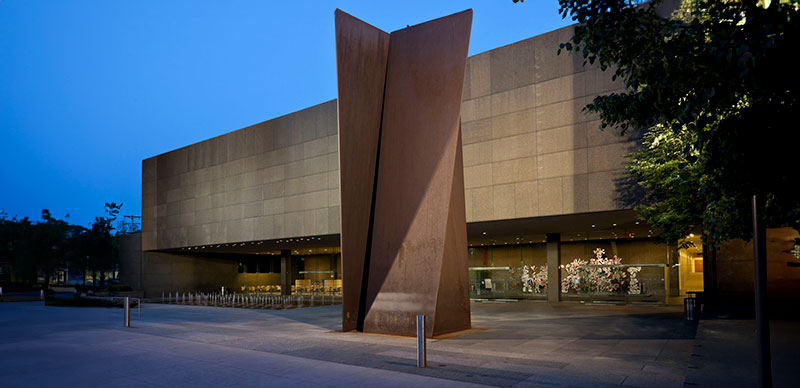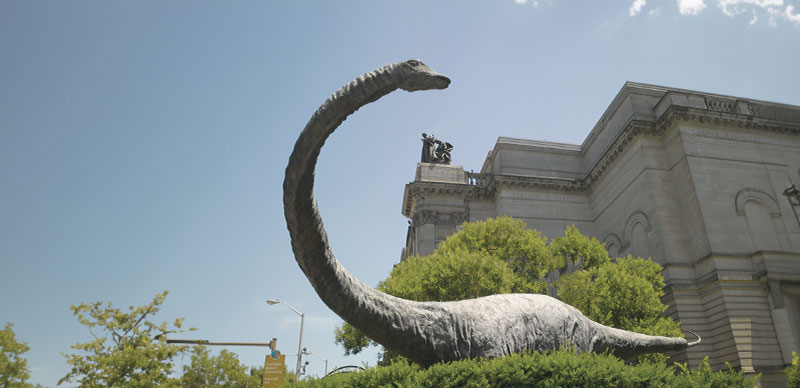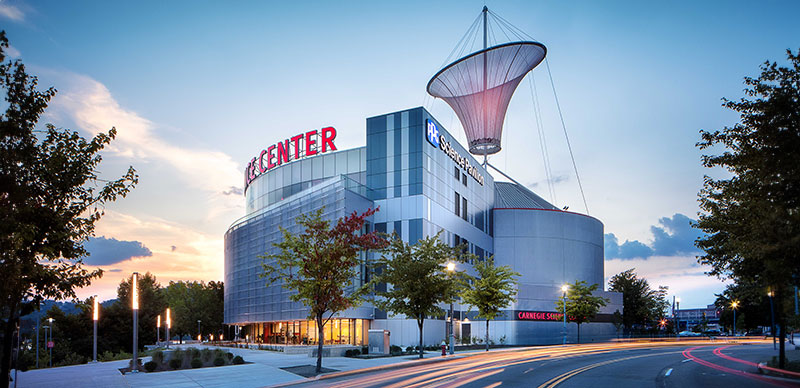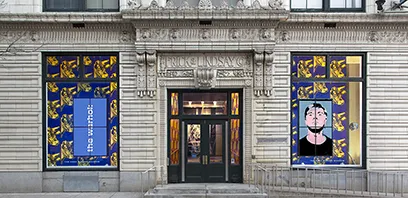“Carnegie Museums of Pittsburgh” is the new name chosen to replace
“The Carnegie” as a popular title for western Pennsylvania’s famous cultural
organization. It’s a change that comes during the centennial year, and it describes
the organization more accurately.
In the decade since the name “The Carnegie” was adopted, two new institutions
have been added to the corporate family: Carnegie Science Center in 1991 and The Andy
Warhol Museum in 1994. While “The Carnegie” is a simple generic term, it
has become identified so much with the museums of art and natural history in Oakland
that the newest stars of our corporate group-the Science Center and Warhol Museum
on Pittsburgh’s North Side-have seemed outside of the family loop.
“Carnegie Museums of Pittsburgh” puts the emphasis back on the group
of individual and very different institutions, but it still allows the historic distinction
between the museums and Carnegie Library of Pittsburgh. Andrew Carnegie emphasized
in his original gift that a “free” municipal library was a public trust
to be supported by the city. Then he assigned his educational facilities to the separate
“Carnegie Institute,” which was to seek private support. For years his technical
school (now Carnegie Mellon University) was included under the Institute. “Carnegie
Institute” is still the legal and corporate name for the facilities that now
include Carnegie Museum of Art, Carnegie Museum of Natural History, Carnegie Music
Hall, The Andy Warhol Museum and Carnegie Science Center.
The meanings of names change in time. A largely self-educated businessman, Andrew
Carnegie was enamored of the 19th- century concept of an “Institute” as
an organization that pursued education and research-as in Carnegie Institute of Technology
and Carnegie Institution of Washington. In our day the idea of separate museums devoted
to their own particular missions is more precise.
We still make similar decisions in assigning modern names. Carnegie Science Center
could have been called Carnegie Science Museum in 1991 without changing its primary
mission of public service-other cities do have their “museums” of science
and industry. But a “Center” is as popular a word now as “Institute”
was a century ago, and Carnegie Museum of Natural History had long ago established
itself as a great science museum in Pittsburgh. Our 1991 science facility was called
Carnegie Science Center, but it is a logical subdivision of Carnegie Museums of Pittsburgh.
Changes are being planned for making the Museum of Art and the Museum of Natural
History more welcoming to visitors. We can look forward to a new “free zone”
the entire length of the main corridor in the Oakland building, with more user- friendly
amenities, such as occasional tables and chairs, benches, lamps and comprehensive
information about activities, and with computer access to the library’s information
network.
A few editorial changes have been made in this issue. We have put in place two
new columns, one for book reviews, and one for research, and in upcoming issues you
will see other changes. Carnegie Museums and Carnegie Library of Pittsburgh are such
rich cultural resources that their research and public services can be reflected in
many different ways, and the magazine is planning to do that.
After the March/April issue announced that the magazine was going online, one loyal
reader called to say that she hoped that this change did not mean the magazine was
going to abandon its print version in order to become an exclusively electronic publication.
There is no need to worry about that. We did have over 300 “visitors” to
our electronic “site” in March, and afterwards a few let us know how much
they valued having the magazine online, and liked seeing online the calendar and information
and about activities. (Our address is /cmag/emag.html.)
But print is here to stay. In November 1995 Raymond W. Smith, the CEO of Bell Atlantic,
addressed the Magazine Publishers of America and told them that despite his own company’s
aggressive role in delivering information electronically to the public, “content”
in the form of good journalism would always remain “king” and have the highest
consumer value in an age of often overwhelming and irrelevant data. He predicted that
the magazines and newspapers that will prosper in the next century will be:
“…the ones that offer the best journalism, that master the subjects about
which they write and acquire the talent and expertise to appraise and explain an infinite
variety of events. Sounds self-evident, but it’s actually the key to creating value
in an information-based economy in general: The highest returns are on investments
in the products of the mind, not physical assets. So content remains king, and knowledge-not
mere information-is power. And the fundamentals of publishing-the same criteria for
excellence that produce your most vibrant products today-will hold true as you move
into the new media.
“You know, if I were to stand up when I speak at next week’s Comdex conference-the
biggest single computer trade show in the world-and tell them that I had found a ‘terminal
device’ that fit in any briefcase, was 100 percent secure, easily affordable, with
excellent graphics and random-access capability, that had a great navigator, allowed
for an infinite variety of innovative designs and could be target to any market niche,
I’d be the toast of Las Vegas.
“That ‘device’ would be a magazine.”
— R. Jay Gangewere
Editorial (May/Jun 1996)
“Carnegie Museums of Pittsburgh” is the new name chosen to replace “The Carnegie” as a popular title for western Pennsylvania’s famous cultural organization. It’s a change that comes during the



